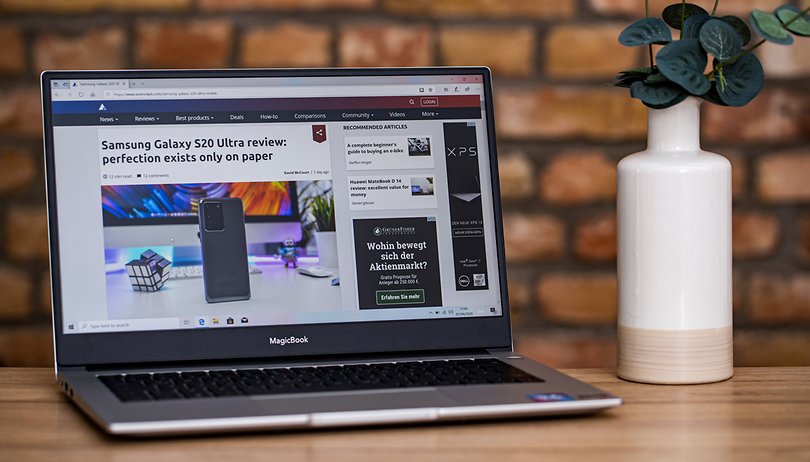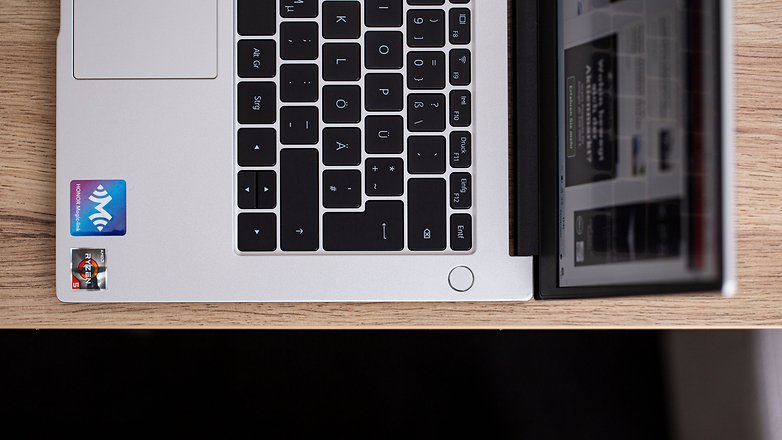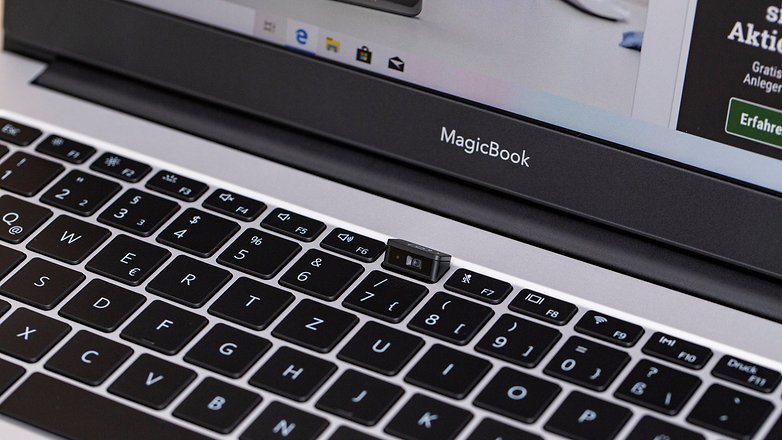Honor MagicBook 14 review: a lightweight, affordable workhorse


The MagicBook 14 sees Honor's first laptop entry several new European markets. On paper, it is almost identical to the Huawei Matebook D 14, which is why I would like to share my impressions of it after spending a fortnight with the Honor MagicBook 14. There is plenty to shout about, so do read on.
How much would you fork out for a lightweight yet fast laptop that is perfectly sized to carry around without breaking your back while sporting solid workmanship? Honor has priced the MagicBook 14 at £550/€599, and at that price point you will be getting the following:
Honor MagicBook 14: technical specifications
| Display | 14 inch, 1,920 x 1,080, 220 cd/m², matt |
|---|---|
| Dimensions and weight | 322.5 x 214.8 x 15.9 mm, 1.4 kg |
| Chipset | AMD Ryzen 5 3500U, Vega 8 |
| RAM | 8 GB DDR4 2400 (933 MHz), Dual Channel, soldered and not expandable |
| SSD | 256 GB PCIe-NVME, M.2 2280 (Samsung MZVLB256HBHQ) |
| Battery | 56 W, USB-C charger with 65 W |
| Connections | Type-C (charger + USB 3.1, no HDMI), USB-A 3.1, USB-A 2.0, HDMI |
| Windows | 10 Home, no bloatware |
| WLAN | Realtek 8822CE Wireless LAN 802.11ac |
| Audio | Realtek, stereo on the underside |
| Fingerprint sensor | available |
| Card reader | non-existent |
| Webcam | 0.9 MP, in keypad |
First of all, I would like to warn you that after spending close to ten years using Linux and half a year with macOS, this is the first time that I am using Windows after so long, and two weeks at a stretch to boot. Needless to say, my past experience taught me to brace myself for unexpected crashes, sudden update reboots, and other similar hiccups. I also somewhat expected to see a lot of bloatware installed with notifications flashing at me as a constant reminder to renew my antivirus software or Microsoft subscription. Thankfully, nothing like that happened while large updates were installed in a jiffy without any hassle.

My user experience with the Honor MagicBook 14 was pleasant right out of the box. When testing the identical Huawei Matebook D 14 (2020), my colleague Daniel had waxed lyrical about its detailed workmanship, specifications, and general performance. He also concluded that the laptop justifies its £650 price tag. Honor is now practically selling the same model for £550, albeit with a lesser 256GB SSD capacity (which can be upgraded to 1TB).

If you decided to fork out an additional 100 pounds, you will be able to enjoy a whole lot more storage space with a 1TB SSD. There is one brickbat that I find annoying: you are stuck with 8GB of RAM onboard since it has been soldered on, without any room left for future RAM upgrades. The dual-channel architecture used by the onboard RAM will enable to Ryzen 5 APU to achieve its full potential (up to 1GB of RAM is allocated as VRAM).

You can game on the Honor MagicBook 14
I am not a gaming enthusiast, but I do not mind indulging in the occasional round of Skyrim Special Edition or Cities: Skylines (yes, it is a classic). Both titles were not only playable but also enjoyable on the MagicBook 14. Even when I am involved in more complex battle scenarios or working with larger cities, the frame rate does not suffer until it drops below the 24 FPS mark in Full HD resolution and medium detail (SSAO off) configuration. The four physical CPU computing cores and 512 shader units do not disappoint where casual gaming is concerned. Of course, you would not expect this to be your go-to machine when it comes to serious gaming.

Joyful discoveries
I still get nightmares with a slew of pre-installed software during my time with Windows-powered computers, be they laptops or desktops. Thankfully, those memories remain in the past as the Honor MagicBook 14 does not come with any bloatware. While it ships with PC Manager that will load and install new drivers discretely in the background, this is not an issue at all. In addition, you can still configure it in a way for the battery to remain between 40 and 70 percent charged, so as to increase the lifespan of the battery.
The devil is in the details
One must take note that the MagicBook 14 is a mid-range device, so expect there to be flaws that accompany it. During this time where social distancing is the buzzword, and much daily communication is done over a webcam, I feel that the MagicBook 14's biggest flaw would be the location of its pop-up webcam. It is placed in between the F6 and F7 keys, popping up when in use and receding when not needed. The angle of the webcam results in a less-than-flattering view of yourself in the sight of others. Unfortunately, the webcam's position is fixed, and there is no way to adjust the viewing angle.

Another point to take note of: I am unable to tell which of the two Type-A ports supports USB 3.0, with the other being USB 2.0 as there are no external markings for the user to refer to. There is no indication at all to determine the faster Type-A port that virtually everyone would prefer to use, requiring me to dive into the manual to find out. The fast port is located on the left.
It is a no-brainer to figure out the USB-C connection that offers fast charging capability (plug it in for 30 minutes and achieve an average charge of 46 percent) and USB 3.1 data transfer. You will be able to hook up external displays to the MagicBook via HDMI (which would most probably be HDMI 2.0 based on the processor that runs underneath the hood).
Conclusion
If I had bought the MagicBook 14 for £549 myself, I would probably be a very happy camper. The type of games I play run decently without any dropped frame rates, it does not crash when I work, and the overall hardware should be decent enough to last me for the next four years. The quality of workmanship also makes me suspect that this laptop is still going to look good down the road, save for the usual wear-and-tear associated with everyday use.
While 8GB of RAM without any option for expansion is not ideal, but it is sufficient for basic computing tasks such as emails, surfing, word processing, casual gaming, and video streaming. I would most probably have it run on Linux after a couple of years as Linux is far less taxing on hardware requirements across time although that would mean losing the fingerprint security option in the process.
I would suggest the Dell Inspiron 5485 with 512GB SSD as an alternative if you are looking at a more established name where laptops are concerned. That particular model is being sold around the same price, and it boasts of an Ethernet port, a memory card reader and an additional USB-A connection, although you will have to live with 33 percent less battery capacity.














Well done Amazing article all information here about this product particularly RAM s issue.
-
Admin
Apr 9, 2020 Link to commentWindows has gone a long way in 10 years so no wonder that it was a good experience. The non-expandable Ram is a bit of a drawback but with a 64bit os it should be more than enough